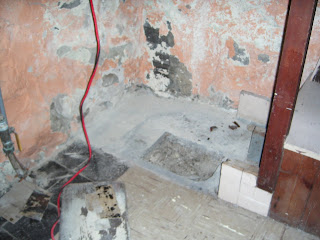A neighbor gave me the name of Basement Systems in NH - I called them, they came out and we now have a perimeter drain. It was a whopping $5500 to do, but I'm very happy with their work.

The concrete basement slab is broken away about 6-8 inches from the edge of the foundation wall all around the basement.

Obstructions such as water pipes are carefully avoided.

The concrete is removed.

A perforated pipe is installed inside the soil below the concrete slab.

Concrete is repoured over the perforated pipes.
This will solve water that comes into the basement by rain water seeping below the foundation and under the slab. This is the easiest option for existing homes. New homes are constructed with a perimeter drain outside the foundation - before it enters the house. Complications have been found with new perimeter drains as well such as clogging of the pipes, but installing an exterior drain is still a better option.
This perimeter drain will not take care of water that comes in through the foundation wall from the outside. This is a problem with any foundation and especially jointed foundations such as rubble stone. This will be the topic of my next post. Basement Systems has a solution for this, but I chose the slow path, which I will explain in part 2.
Water is the evil of structures and it is best kept from the areas in which it does damage. Keeping water away from the foundation is the best mitigation. In our case, all the gutters are in good working order and kept clean. The gutter downspouts drain into an underground drain 20 feet away from the house or deposited directly on the surface at least 5 feet away from the house.
July 13, 2009